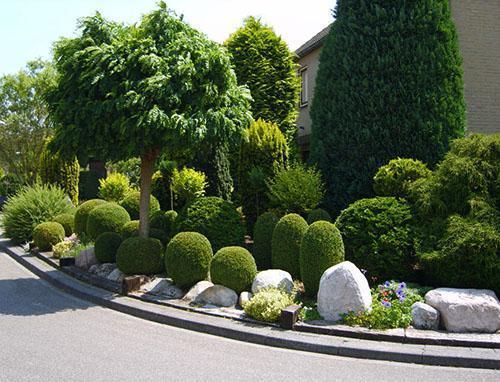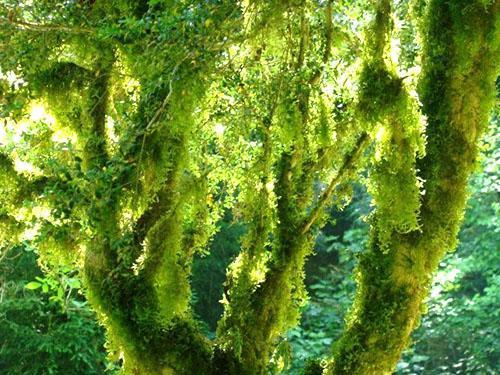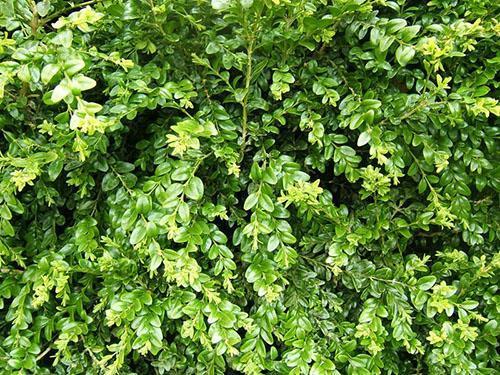We present to your attention a photo and description of different types of boxwood
 In the ancient world, boxwood was considered a precious plant due to the similarity of wood to amber. For its extraordinary hardness and density, which allows the tree not to sink in water, it was nicknamed "iron". Also, boxwood was considered a talisman that protects against the intrigues of dark forces and fulfills cherished dreams. In modern life, this is one of the favorite plants used in landscape design, and simply to decorate the interior of a house or apartment. All over the world, souvenirs, jewelry, dishes and even musical instruments are made from it.
In the ancient world, boxwood was considered a precious plant due to the similarity of wood to amber. For its extraordinary hardness and density, which allows the tree not to sink in water, it was nicknamed "iron". Also, boxwood was considered a talisman that protects against the intrigues of dark forces and fulfills cherished dreams. In modern life, this is one of the favorite plants used in landscape design, and simply to decorate the interior of a house or apartment. All over the world, souvenirs, jewelry, dishes and even musical instruments are made from it.
Boxwood in nature

All parts of the plant are poisonous, especially the leaves.
Types of boxwood
The genus of boxwood has several dozen species. The most common ones are:
 Boxwood evergreen(Buxus sempervirens), widely used in decorative landscaping of sites. In its natural habitat it reaches a height of 15 meters, at home - 6 meters. It tolerates frost well, but is extremely sensitive to thaws and bright sun. It has 3-centimeter oval leaves and dark green color.
Boxwood evergreen(Buxus sempervirens), widely used in decorative landscaping of sites. In its natural habitat it reaches a height of 15 meters, at home - 6 meters. It tolerates frost well, but is extremely sensitive to thaws and bright sun. It has 3-centimeter oval leaves and dark green color. Small-leaved boxwood(Buxus microphilla). The main difference from evergreen boxwood is that the leaves are smaller (from 0.5 to 2.5 cm).
Small-leaved boxwood(Buxus microphilla). The main difference from evergreen boxwood is that the leaves are smaller (from 0.5 to 2.5 cm). Balearic boxwood(Buxus balearica), on the contrary, has larger leaves - up to 4.5 cm.
Balearic boxwood(Buxus balearica), on the contrary, has larger leaves - up to 4.5 cm. Colchis boxwood(Buxus colchica) reaches 8 meters in height. The leaves are dark green, slightly curved inward.
Colchis boxwood(Buxus colchica) reaches 8 meters in height. The leaves are dark green, slightly curved inward.
Many decorative types of boxwood have been bred. Depending on the color of the leaves and the shape of the bushes, among them:
- Aureovariegata has yellow-spotted leaves;
- Marginata, its leaves are surrounded by a yellow border;
- Latifolia Maculata has golden leaves;
- CurlyLocks whose stems are curved.
Boxwood at home
 Most often, evergreen buxus is grown at home. The photo of a boxwood tree shows how it can be used in the design of plots. Tall trees are useful as hedges. An excellent solution would be a green wall against which roses bloom.
Most often, evergreen buxus is grown at home. The photo of a boxwood tree shows how it can be used in the design of plots. Tall trees are useful as hedges. An excellent solution would be a green wall against which roses bloom.
 Gardeners love to use boxwood as borders for flower beds, and also make a variety of shapes from the crown of a plant. To do this, as they grow, the boxwood bushes are cut off, the shoots are bent in the right direction using wire. The process can be regulated throughout the year. The simplest shapes are a cube, a cone, or a ball.
Gardeners love to use boxwood as borders for flower beds, and also make a variety of shapes from the crown of a plant. To do this, as they grow, the boxwood bushes are cut off, the shoots are bent in the right direction using wire. The process can be regulated throughout the year. The simplest shapes are a cube, a cone, or a ball.
 If you wish, you can make a bush in the shape of, for example, an animal.
If you wish, you can make a bush in the shape of, for example, an animal.
Recently, indoor boxwood has also become widespread. It does not take up much space, as it grows only 5 cm per year. Quite moody, with improper care, boxwood quickly sheds its leaves. The best place to grow it is in a moderately lit windowsill. Transplanting boxwood is done as needed, usually once every 2-3 years and is tolerated by the plant quite well. It can take root in any period, excluding winter.
 Buxus Sempervirens is a moisture-loving breed, but you don't need to be too zealous.Its roots do not tolerate waterlogging. Well, to save the soil from drying out, pebbles or moss can be spread on its surface. In spring and autumn, it is recommended to spray the leaves with water. In winter, the plant needs to be kept cool and this usually becomes the biggest problem. A way out of the situation can be the manufacture of a special greenhouse for wintering.
Buxus Sempervirens is a moisture-loving breed, but you don't need to be too zealous.Its roots do not tolerate waterlogging. Well, to save the soil from drying out, pebbles or moss can be spread on its surface. In spring and autumn, it is recommended to spray the leaves with water. In winter, the plant needs to be kept cool and this usually becomes the biggest problem. A way out of the situation can be the manufacture of a special greenhouse for wintering.
For glaze it is not necessary to use filtered or settled water - boxwood is completely insensitive to water hardness. The only requirement is that it should not be too cold.
With the onset of heat, it is advisable to expose the boxwood in a pot to the street, protecting it from direct sunlight. It will feel good in the shade of trees or on a well-lit veranda. In autumn, when the first cold weather approaches, the plant should be brought back. At home, boxwood rarely blooms. Usually it takes about 20 years before the first flowers appear. The flowers of the plant are small and not very beautiful, yellow in color.
 If you do not provide conditions favorable for plant growth, boxwood pests can soon make themselves felt. Usually it is a spider mite or scale insect. To combat them, the plant is soaped, having previously tightened the soil with a film. After washing away the pests, the tree is rinsed under the shower.
If you do not provide conditions favorable for plant growth, boxwood pests can soon make themselves felt. Usually it is a spider mite or scale insect. To combat them, the plant is soaped, having previously tightened the soil with a film. After washing away the pests, the tree is rinsed under the shower.
Boxwood is propagated by cuttings in spring or autumn. Seed propagation is not so popular. It is difficult to take root cuttings. Of 100 pieces, only 80 will be able to take root at best.
It is recommended to grow buksus in warm climates. Although it is quite resistant to cold weather, boxwood in the Moscow region is unlikely to survive the winter. The minimum temperature that it can withstand is -15 degrees. Strong winds and evergreens have a detrimental effect on the evergreen. Therefore, to wait out the cold weather, boxwood can be placed on a cool veranda or loggia. Young shrubs need the greatest attention during the wintering period.
Useful properties of boxwood
 For all its toxicity, boxwood is a very useful plant. It releases phytoncides - active substances that destroy harmful microorganisms in the air. The most valuable are the bark and leaves of the plant, in which alkaloids, bioflavonoids, tannins, and resin are found. In folk medicine, boxwood is used as a laxative, diuretic, diaphoretic, pain reliever, it has an antiseptic effect. The plant is not used by official medicine.
For all its toxicity, boxwood is a very useful plant. It releases phytoncides - active substances that destroy harmful microorganisms in the air. The most valuable are the bark and leaves of the plant, in which alkaloids, bioflavonoids, tannins, and resin are found. In folk medicine, boxwood is used as a laxative, diuretic, diaphoretic, pain reliever, it has an antiseptic effect. The plant is not used by official medicine.